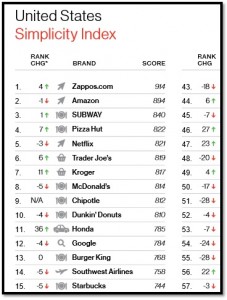Since our DASH Conference earlier in the month, there has been no shortage of conversation and buzz about all things “connected car.” Some of the stories reinforce a great deal of activity from the automakers, while others are simply making wild and crazy statements about cars that equipped with digital connectivity.
For example, the early numbers (including our own Techsurvey10) show that Boomers are most likely to purchase or lease one of these vehicles with Ford SYNC or AudiConnect. So the theory goes that there won’t be a trickle down effect that will reach younger generations because tech adoption typically gravitates from teens to adults. But if you spend time with automakers and their suppliers, you understand the true trajectory of “connected cars.”
Dr. Ed Cohen’s “Class of 2015” presentation at DASH suggested that college students are less concerned about “connected cars” and are more focused on basic Point A to Point B transportation. But whether they want it or not, younger generations around the world will be driving these digitally enhanced cars and trucks because that’s pretty much what is already rolling off the assembly lines.
For example, WiFi enabled cars are permeating the entire GM line of vehicles. As we discussed after CES in January, Chevy is equipping all their cars – from Luminas to Vettes – with the ability to be connected to the web. And GM’s Rich Martinek reaffirmed his company’s commitment to WiFi at DASH:
“And that’s why you see us put things like OnStar 4G LTE in all the cars. We didn’t just roll out a few. We rolled it out pretty much across our whole portfolio. By the end of this year, we’re going to have 30 vehicles with in-car WiFi.”
From entry level vehicles to top of the line models, they’ll all be coming out of the factories connected and ready to go. But the challenge to the automakers is what they call the HMI – or Human Machine Interface – and the end result isn’t always pretty. Many of you have seen this in a number of often humorous research videos that we’ve shown at “connected car” presentations, thanks to our friend Roger Lanctot of Strategy Analytics. These in-car exercises show very clearly how consumers struggle to do even the basics with many of these digitally connected systems.
Earlier this week in an interview in the McKinsey Quarterly, Ford ‘s Executive Chairman, Bill Ford talked about how technology is becoming a more integral part of his company’s vehicles. But of course that comes with a challenge:
“One way to distinguish ourselves will be in how we present these technologies to customers, so that they find them appealing and not intimidating. There will be a lot of new technologies that help enhance the driving and safety experience, but some people won’t be comfortable with them…”
A key topic at DASH was the need for “connected cars” to operate simply and seamlessly. And yet, just about everyone on the automotive side of our stage admitted that there’s a ways to go before that happens, especially given the fact that every car manufacturer has a their own proprietary system. While they continue to try to work out the bugs and get it right, consumers are faced with a learning curve when they buy or lease a new car. And don’t even get me started about the joys of renting cars which is always a rollercoaster when it comes to trying the master the digital dash.
So that brings us back to the topic of the AM/FM radio in cars. Its simplicity is a unique and remarkable attribute that is never marketed. That’s because most radio people still haven’t personally experience a “connected car,” thinking that we’re still living in the familiar “2 knobs/12 preset” world. The reality is that at time when consumers often find themselves confused by the technology in their cars and in their lives, radio stations alone as the medium that everyone understands how to use.
A recent New York Times article addressed the consumer’s need for products and brands that are simple and easy to use. It turns out there’s a Global Brand Simplicity Index produced by branding consultants Siegel & Gale. At right, you can see the Top 15 brands ranked in the U.S. utilizing their index. If you use Zappos, Amazon, or Subway, you kn ow that transactions are easy, choices are well illustrated, and the service is always consistent. By the way, Amazon owns Zappos, so that should tell you something, too.
ow that transactions are easy, choices are well illustrated, and the service is always consistent. By the way, Amazon owns Zappos, so that should tell you something, too.
It turns out the there’s a lot to be said for brands that keep it simple for consumers. Howard Belk, one of Siegel & Gale’s corporate officer puts it this way:
“One of the pillars of our simplicity story is that simplicity pays, in that the companies that embrace simplicity win more customers, have customers who are more loyal and can charge a premium for products.”
In a world that is becoming increasingly complex, the simplicity, familiarity, and ease of use of AM/FM radio is obvious. While many consumers may enjoy streaming, podcasting, building playlists, and customizing their music, many others just want their entertainment and information served up without the frills, spills, fails, buffering, data drainage, and other hassles.
In short, radio’s HMI is the envy of other industries and other brands. When it comes to the Human Machine Interface with radio, nobody does it better.
Corporations s as diverse as Ford, Apple, Amazon, Spotify, and Google are all working on creating an attribute that radio simply owns – easy usage, a common consumer understanding, an a reliable system that really never fails. These companies, given the time and the investment, will get it right. In the meantime, radio has some marketing advantages they’d all kill to have.
There is a reason why they’re all calling themselves “radio.”
But there’s only one radio.
- What To Do If Your Radio Station Goes Through A Midlife Crisis - April 25, 2025
- A 2020 Lesson?It Could All Be Gone In A Flash - April 24, 2025
- How AI Can Give Radio Personalities More…PERSONALITY - April 23, 2025




Leave a Reply